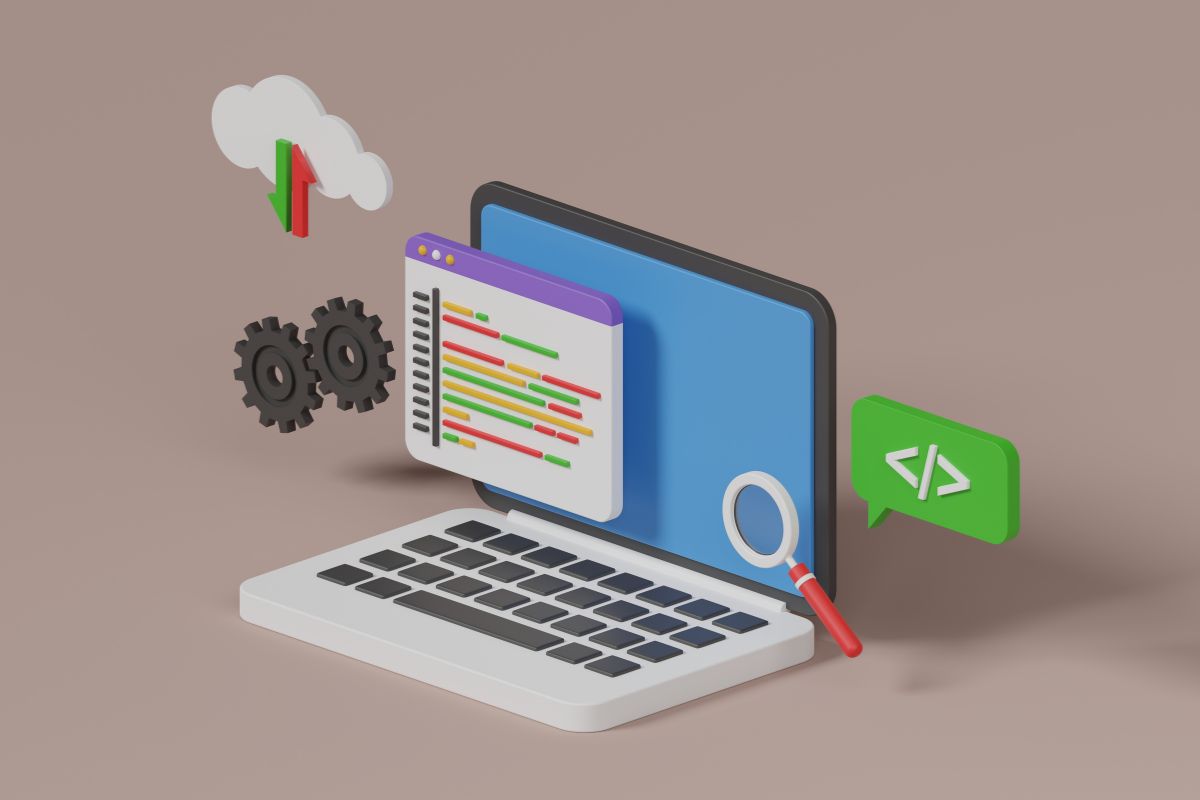Developers of Android and iOS mobile apps use Facebook’s open-source React Native JavaScript technology. Developers have largely embraced it since its introduction in 2015. This framework, well-known for its aesthetically pleasing UI, lets programmers create mobile apps for the iOS and Android platforms.
It makes advantage of reusable components, making them appear like native user interface elements, so that the user experience remains consistent on both platforms. React Native’s cross-platform capabilities enable developers to employ JavaScript for native features like push notifications, cameras, and location services, which simplifies the process of designing organised apps.
React Native app development in the USA is saves money and time. A vast library and toolkit, along with the support of a big community, enable developers to create feature-rich, safe, and scalable mobile apps.
Additionally, native code for the iOS and Android platforms, such as Objective-C and Kotlin, can be included by developers. It is ideal for developing mobile apps because of its excellent performance, scalability, reliability, and compatibility with multiple platforms.
Why Choose React Native for app development?
The creation of React Native apps has gained a lot of attention. It is ideal for developing mobile apps because of its excellent performance, scalability, reliability, and compatibility with multiple platforms. Developing hybrid apps is another excellent use case for React Native, since it provides an easy-to-integrate UI that is both responsive and fluid, in addition to third-party plugin and API interaction.
A very powerful framework for creating mobile apps is React Native. It lowers overall load time and offers a smooth, sophisticated, and extremely responsive user interface (UI). It is quicker and less expensive to develop apps using a React Native app development firm than it is to create native ones, without sacrificing features, quality, or functionality.
React Native is widely used in businesses, which is evidence of its potency in cross-platform development. Let’s have a look at the tips and tricks we’ve put up for your React Native developers to use in order to optimise your project:
11 Best React Native App Development Tips and Tricks
Some of the top React Native App Development Company in the USA follow these tips and tricks to build appealing apps.
Embrace the Power of Hermes Engine
To unleash the full potential of Hermes and React Native, take these essential steps: -Activate Hermes in your React Native project. This switch can speed up startup times and enhance runtime performance.
Optimize your code: Even with Hermes, efficient coding practices are crucial. Streamline computations and minimize DOM accesses for optimal performance.
Keep React Native up to current: By using the most recent version, you can maximise its benefits and assure compatibility with Hermes.
App Testing: After integrating Hermes and optimizing the code, it is imperative to do comprehensive testing and using profiling tools to detect and resolve performance issues.
While rendering avoid anonymous functions
In React Native, avoiding anonymous functions when rendering components is imperative. This practice is crucial for optimizing your app’s performance. A new function object is created each time a component renders if an anonymous function is defined inside the render method of the component.
This results in unnecessary re-renders, negatively impacting your app’s performance. To solve this issue, it is advised that you write your functions outside of the render method and provide them as props to your components. By doing this, the function object will only be generated once, avoiding wasteful re-renders and guaranteeing peak app performance.
Prevent using in-line functions
When using React Native’s inline functions as props for child components, the child component may needlessly re-render. This occurs because each time the parent component renders again, a new instance of the inline function is produced, causing the child component to render again even while its state or props remain unchanged.
Optimizing Images
High-quality photos may cause your program to become much larger and perform much worse. Including images often constitutes a substantial portion of an application’s load time. Image optimization through resizing, compression, and using the right formats can greatly improve performance.
In addition, integrating the FastImage library for image caching can improve the user experience by enabling smoother scrolling and rendering of images. . Optimizing these assets is crucial to ensure an effortless user experience.
Use Steady NPM packages
It’s important to choose smaller, more stable NPM packages for your React Native application. This reduces the size of your application and ensures efficiency due to its stable codebase. Please consider the following NPM website data while selecting the ideal package for your needs: Examine similar NPM packages available elsewhere.
Check the weekly downloads of the NPM package: A package with more weekly downloads is preferable.
Assess the size of the npm package: A more compact package will occupy less space in the project, ultimately reducing its overall size.
Look at the quantity of releases: More releases suggest that developers are actively maintaining their work.
Review the last update: This will help determine whether the package is still being maintained. Integrate these considerations into your package selection process. Hire a React Native developer to identify suitable, stable, and efficient NPM packages for your React Native project.
Avoid memory leaking
A memory leak occurs when a software program fails to release allocated memory (RAM) that is no longer required. Memory leaks can gradually cause a program to consume more memory, which could result in slowdowns or crashes as a result of running out of memory if they are not fixed over time.
Utilize Android Studio and iOS Xcode profiling tools to identify memory leaks within your applications. These techniques are intended to identify regions where memory usage is rising, although identifying the precise reasons can be difficult.
Detecting memory leaks in an application can be complex, so it is advisable to proactively keep the points mentioned above in mind to prevent memory leak issues. Detecting memory leaks in an app can be difficult, so it’s best to remember the above points to prevent memory leak issues.
Embrace a modular approach
Adopting a modular approach is crucial for success in React Native app development. You streamline development and elevate code maintenance by breaking your application into reusable modules. Benefits of the Modular Approach: – Enhanced code reusability – Clearer code structure comprehension – Streamlined debugging and maintenance
Accelerate Your React Native App with Higher Order Components
Higher-order components (HOCs) represent a potent feature in React Native, making a substantial contribution to optimizing app performance. These functions accept a component as input and return a new component with enriched capabilities.
By leveraging HOCs, developers can achieve code reuse, detach business logic from presentation logic, improve performance by minimizing unnecessary re-renders, handle authentication logic, and efficiently fetch data from APIs.
Reduce Application Size
To optimize your React Native app, consider using ProGuard to create different app sizes for various device architectures and compressing images. Adhere to the following best practices to minimize app and image sizes:
- The process involves transitioning components from the native environment to the React Native environment.
- Reduce bridge load to enhance app performance
- Prioritize stability when using open-source libraries
- Opt for smaller PNG images and convert them to WebP format
- Utilize React NativeJS Thread and Navigator transitions
- Reduce CodePush bundle size by 66% using the .webp format
Reusability is crucial
When each component is dedicated to a single function, its usability is enhanced. This efficiency-enhancing approach saves developers time by repetitively eliminating the need to construct a new element for the same function.
Additionally, it facilitates project uniformity and encourages cooperation within the React Native community. It is vital to ensure project consistency and foster collaboration within the React Native community. Additionally, components must be concise and uncomplicated rather than bulky or intricate to facilitate seamless development.
Optimizing JSON to maximize React Native app performance
Mobile applications rely on fetching data from remote servers through APIs. However, the JSON data retrieved from these APIs often contains complex nested objects, which causes performance issues during rendering. To overcome this, it is recommended to hire a React Native developer proficient in data processing and optimization, which is crucial for implementing this strategy effectively.
With expertise in React Native development, such a developer can design efficient data preprocessing pipelines tailored to your application’s specific requirements. You can also streamline JSON data handling, mitigate rendering performance issues, and deliver an enhanced user experience.
Here are some additional tips that React Native app development services typically follow
Gestures and navigation shortcuts
Utilizing gestures and navigation shortcuts can enhance user experience in React Native. By overcoming performance constraints, the Gesture Handler library gives developers more freedom and native component integration for gesture handling.
Personalizing preferences and settings
Incorporating customizable options can significantly enhance user satisfaction. App users will appreciate the ability to personalize the application to align with their preferences.
Embracing the power of device features
Enhance your React Native app by seamlessly integrating native device features. This empowers users with greater control and elevates their overall experience. You can easily integrate necessary elements like the camera and location with easy commands, making your app more dynamic and interesting.
Harness the power of offline capabilities.
Because cross-platform apps are offline, users can still access key functions even when they aren’t online. This capability is particularly critical for users dependent on uninterrupted access to essential features.
After-sale service
To ensure a positive user experience, it’s crucial to provide accessible customer support. With millennials valuing instant assistance, offering quick access to representatives for guidance is essential.
Easy to use and understand app layout
React native app development companies create captivating app layouts for their users. To create a straightforward but stunning, immersive website design that improves user interaction, they use UI/UX designers.
Here are three exceptionally successful and widely loved React Native Apps
Companies globally are transitioning to React Native apps instead of native apps. Let’s examine some prominent companies harnessing the capabilities of React Native apps.
Facebook & Facebook Ads
As the pioneer of this framework, Facebook was the first to integrate a React Native app. Facebook developed applications for iOS and Android using React Native and subsequently introduced Facebook Ad Manager. Facebook Ads was the pioneering fully operational cross-platform application built using React Native.
This application effectively manages a significant amount of data on a minute-by-minute basis while accommodating a wide range of time zones, currencies, and ad formats. This strategic choice by Facebook influenced numerous other major corporations to embrace React Native apps.
Walmart
Walmart The renowned American global retailer Walmart has improved its operational foundation by implementing the React Native App. React Native’s integration with the current native app architecture is the result of a calculated choice to improve user experience in general. Walmart’s unwavering dedication to embracing technological breakthroughs and preserving a competitive edge in the industry is demonstrated by this program.
The widely-used video and photo-sharing social media platform Instagram, was developed using React Native. The realization that they could effectively develop applications for both the iOS and Android platforms with 85–90% of the code shared led them to decide to integrate their native app with React Native. As a result, this approach led to accelerated app delivery.
On a final note
React Native stands out as an exceptional cross-platform app development framework, setting a high standard in the industry. These React Native app development recommendations can assist in creating a feature-rich and user-friendly mobile application that works with both the iOS and Android operating systems.
Throughout the app development process, keeping these methods, approaches, and strategies in mind will greatly increase the likelihood of producing a successful result.”
















